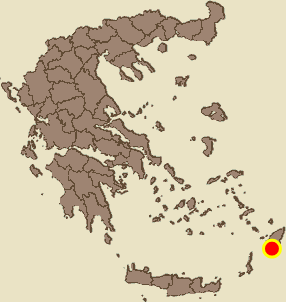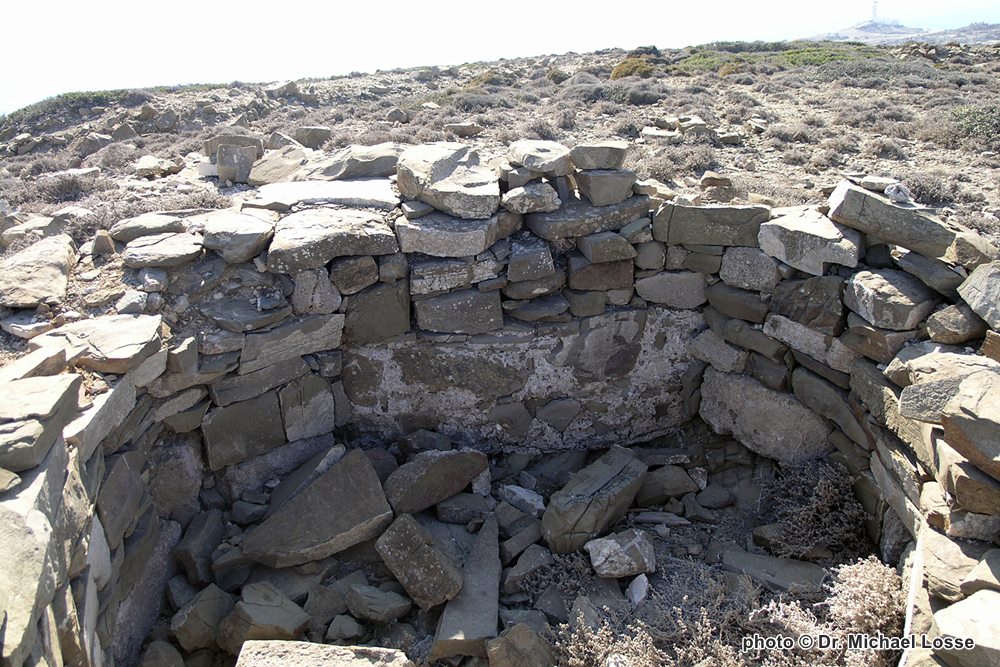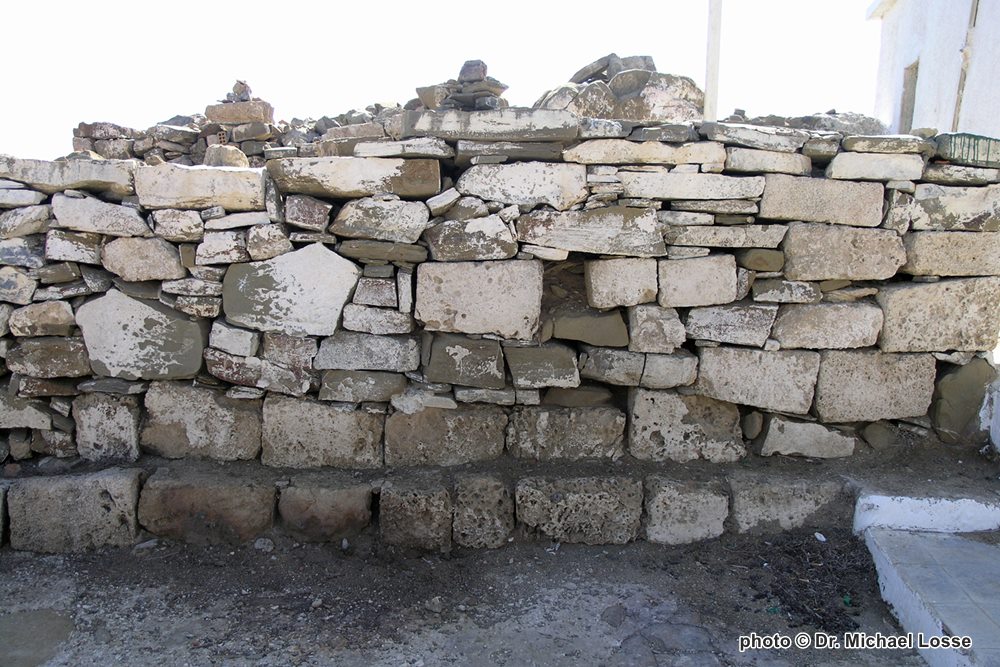Prasonisi, Rhodes, Dodecanese,South Aegean
Watchtower at Prasonisi
| Location: |
| At Prasonisi, the southern-most tip of Rhodes island |
| Region > Prefecture: |  |
| South Aegean Dodecanese | |
| Municipality > Town: | |
| City of Rhodes • Prasonisi | |
| Altitude: | |
| Elevation ≈ 80 m |
| Time of Construction | Origin | |
| ptobably 15th cent. | IOANNITE |
|
| Castle Type | Condition | |
| Watchtower |
Few Remains
|
Remains of watchtower (vigla), probably from the Ioannite period, at Prasonisi, the southern-most tip of Rhodes island, about 1000m east of the lighthouse.
Castle Description
Text: Dr. Michael Losse – Singen (Hohentwiel), GermanyGeneral description
The Prasonísi peninsula forms the southern-most tip of Rhodes island. A sand-covered Isthmus, sometimes flooded in high winds and 200 m wide at the narrowest point, connects it to the island. The peninsula’s size and location may have necessitated the construction of several watchtowers, but so far only remnants of one tower have been found (cf. Losse 2009, pp. 255-256).
At the southwest peak of Prasonísi, near the lighthouse, according to the literature and reports of the inhabitants of the village of Kattavía, the ruins of a Knights Hospitallers’ watch tower are to be located: Gerola (1914, p. 354) lists under Kattavía the place name “Nisi” as the site of a round tower “on the promontory/cape of the lighthouse”.
Although the present lighthouse appears to be above the foundation of an older round tower constructed in quarry stone, but differently shaped. In addition, in dry stone walls around blocks of limestone in second use as well as in the terrain quite a lot of ceramics can be found. In the overview map enclosed in Peter Locks article (2006) you can find the signet for a watchtower on Prasonísi. Michael Heslop (2009) writes: “The remains of the tower were reused by the Italians during their occupation, 1912-1943.”
In October 2007, during our survey, Ilga Koch found sparse remains of a round tower a little bit more than 1.000 metres east-southeast of the lighthouse. The tower stump (Ø about 4 m), which was only about 0.8 m high above today's ground, is partly overbuilt by an Italian position from the 2nd World War; it protrudes into a round gun or machine-gun position.
In various gun stands and trenches of the Italian defences, numerous blocks of stones can be seen, which could have come from the tower. There is a lot of ceramics at the tower site.
Access (route / entrance)
From the Isthmus a track leads almost to the tower stump (free access; better walk, the road is very bad). The point of reference is the Italian building with the oktogonal upper storey.
History of the castle/tower
The tower was most likely built in the context of the construction of the watchtower system of the Order of the Knights of St. John (Hospitaller Knights) on the island of Rhodos towards the end of the 15th century, when the Knights started to built a “chain of watchtowers” around the island. Details and exact dates are not known.
Other Info
Sources• Heslop, Michael: The Search for the Defensive System of the Knights in Southern Rhodes. In: Judi Upton-Ward (Ed.): The Military Orders, Vol. 4: On Land and by Sea. Ashgate 2008, pp. 189-200.
• Lock, Peter: Freestanding towers in the countryside of Rhodes. In: Elizabeth Jeffreys (Ed.): Byzantine Style, Religion and Civilization. In honour of Sir Steven Runciman. Cambridge 2006, pp. 374-393.
• Losse, Michael: Wacht- und Wohntürme aus der Zeit des Johanniter-Ordens (1307-1522) auf der Ägäis-Insel Rhódos (Griechenland). In: Burgen und Schlösser 4, 2009, pp. 245-261.
• Losse, Michael: Die Burgen und Festungen des Johanniter-Ritterordens auf Rhódos und in der Ägäis (Griechenland) 1307-1522. (Publisher: Nünnerich-Asmus Verlag) Mainz 2017.
• Losse, Michael: Die (Küsten-)Wachttürme des Johanniter-Ritterordens auf der Insel Rhódos (Dodekanes, Griechenland) bis 1522 – Zum aktuellen Forschungsstand. In: fortifikation. Fachblatt des Studienkreises für Internationales Festungs-, Militär- und Schutzbauwesen e.V. (INTERFEST), Vol. 34, 2020, pp. 59-90.
| First entry in Kastrologos: | February 2021 |
Sources
- Text and photographs (2007) by Dr. Michael Losse
|
|
| Access |
|---|
| Entrance: |
| Free access |
| Other castles around |
|---|
| Castle of Apolakkia |
| Castle of Asclipieio |
| Erimokastro |
| Watchtower at Cape Jermata |
| Paliokastro of Kattavia |
| Castle of Kattavia |
| Watchtower of Plimmyri |
| Tower of Agios Georgios of Tha |





